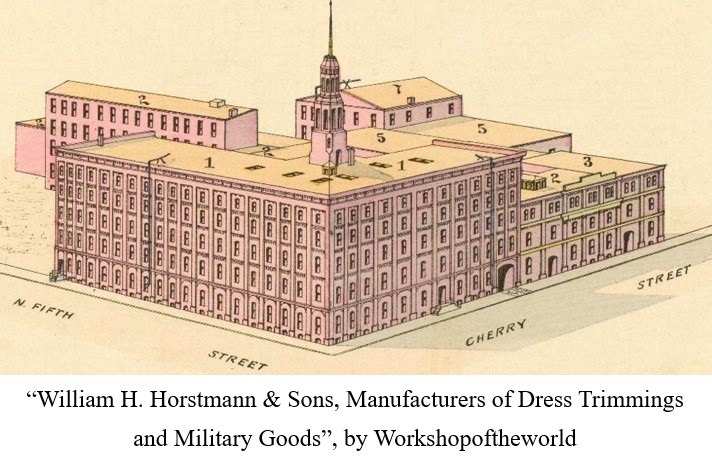Author’s note -- I hope that you enjoy learning from this resource! To help me to continue to provide valuable free content, please consider showing your appreciation by leaving a donation HERE. Thank you and Happy Trails!
Just
what type of sword is it and did I get a real antique, or a modern fake? I had my suspicions, but no proof and that is
why it was a mystery!
The
mystery sword has a one piece hilt and cross guard that are of cast brass. The brass hilt has a fish scaled grip, a
nippled pommel, and a 4 inch (10 cm) cross guard. The grips have been molded in a scalloped fish
scale design with no visible rivets. The
pommel is decorated on each side with a heavily embossed American eagle, with
shield, holding arrows in his left talon and an olive branch in his right
talon. The straight cross quillons
terminate in disk shaped finials.
The tang is an extension of the blade that runs mostly unseen through the grip and allows for the blade, grip, and guard to be bound together. The tang on the mystery sword is slightly irregular and has several hammer marks on, indicating that it was hand made.
The
end of the tang on the mystery sword is threaded to accept a heavily
embellished nut, called a “Capstan” or “Kapstan”, which holds the
blade to the grip.
The
sword has an overall length of 25 ¼ inches (64 cm) and has a double-edged blade
with single and double fullers on both sides. The blade is elliptical in cross section, and
tapers slightly for the first four inches before widening again, then coming to
a spear point.
The
blade washer on the mystery sword is missing, which is often the case with old swords. Blade washers are designed to decrease shock,
reduce looseness between the grip and the blade, lessen noise, and prevent water
from entering the scabbard. Blade washers
were predominantly made of leather, however on imported European swords, cloth,
particularly red wool was common.
The
mystery sword looks like a U.S. Model 1832 Foot Artillery sword, which was a “Roman
gladius” style short sword, that was based on the French foot artillery sword
of 1816.
The
sword was intended as a personal weapon for use by the regular and foot
artillery regiments of the U.S. Army and were standard for both because both artillery
and infantry regiments were trained and equipped as infantry prior to 1861. It was issued to sergeants, drummers and
fifers of infantry regiments from 1832 until 1840 and remained in service until
1872, with foot artillerymen.
Many
modern historians feel that this sword was impractical for actual combat, since
the infantryman’s bayonet or cavalryman’s saber has the advantage in reach over
it2. Reportedly however, it
was put to other uses, such as clearing brush or creating trails, uses which are
supported by the French nickname for their version of this sword, the “coupe
choux” or “cabbage cutter”.
It
would appear that the mystery sword is a U.S. Model 1832 Foot
Artillery, but who made it and is it a real antique or just a reproduction.
The
mystery sword’s grip was cast in one piece since the feather scales show an
intact pattern along both sides of the grip.
A grip that was cast in two pieces and then brazed together would not
have a pattern along the edges, just a smooth seam line.
The mystery sword doesn’t have rivets holding the grip to the blade, so we know that it was not manufactured by Ames Manufacturing.
William H. Horstmann & Sons of
Philadelphia, Pennsylvania also manufactured U.S. Model 1832 Foot Artillery
swords. They could make every part of
the sword and its trappings on site, except for the blades. Blades were imported from Solingen, Germany and
then fitted onto the grips, at their manufacturing/show room located on the
corner of North Fifth and Cherry Streets, in Philadelphia.
But
since there are no markings on the blade or the grip, can we be certain that
the mystery blade was manufactured by W.H. Horstmann & Sons and that it is,
in fact, a genuine antique?
The
missing blade washer, the patina and the hammer marks indicate that it is
probably a genuine antique and since Liveauctioneers sold a Model 1832 sword which
they believed to be manufactured by W.H. Horstmann & Sons, and which had a capstan
identical to the mystery sword’s on September 8th, 2022, it is likely that the
mystery sword is, in fact, a U.S. Model 1832 Foot Artillery sword manufactured
by W.H. Horstmann & Sons of Philadelphia.
Mystery solved!
I
hope that you continue to enjoy The Woodsman’s Journal Online and look for me
on YouTube at BandanaMan Productions for other related videos, HERE. Don’t forget to follow me on both The
Woodsman’s Journal Online, HERE,
and subscribe to BandanaMan Productions on YouTube. If you have questions, as always, feel free
to leave a comment on either site. I
announce new articles on Facebook at Eric Reynolds, on Instagram at
bandanamanaproductions, and on VK at Eric Reynolds, so watch for me.
That
is all for now, and as always, until next time, Happy Trails!
Sources
American Swords LLC; “Basic
Sword Anatomy”, [©American Swords, LLC, 2014-2024], https://www.americanswords.com/the-sword---info.html,
January 11, 2025
U.S. Army Center of
Military History; “1866 Willard Civil War Uniform Photos”, [Quartermaster
Museum, 2220 Adams Avenue, Fort Gregg-Adams, VA], https://qmmuseum.army.mil/research/primary-sources/civil-war/Willard-Uniform-Photos/index.html,
accessed January 11, 2025
Workshopoftheworld; “William
H. Horstmann & Sons, Manufacturers of Dress Trimmings and Military Goods”,
[© 2007 workshopoftheworld.com], https://www.workshopoftheworld.com/center_city/horstmann.html,
accessed January 11, 2025
















No comments:
Post a Comment